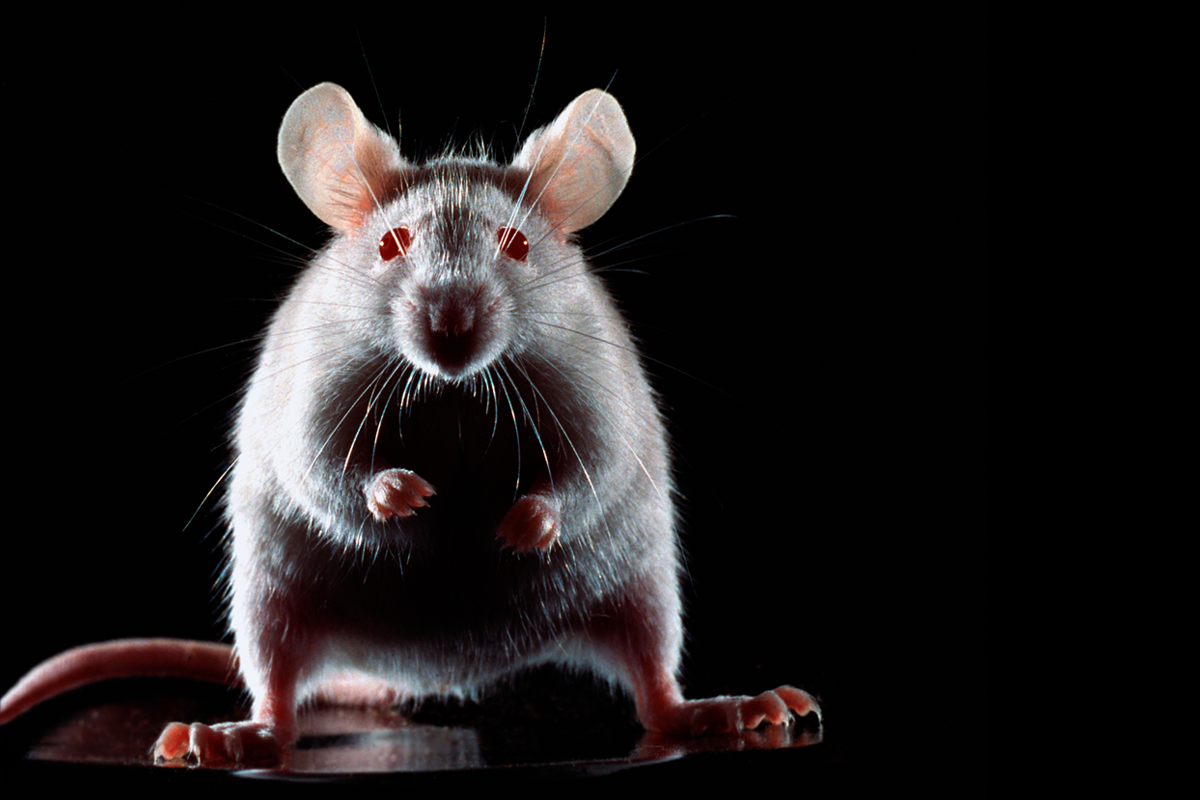
Newly found hypothalamus circuits shape bullying behaviors in mice
Activity in the tiny brain region helps submissive rodents learn to avoid aggressors, and aggressive mice to curb their attacks, according to two recent studies.
The hypothalamus is a miniature marvel. This almond-size region buried deep in the brain predates vertebrates and powers such basic survival functions as hunger, thirst, sleep and body temperature. Beyond these homeostatic tasks, however, it mediates various social behaviors: Activating some neurons in the ventromedial hypothalamus (VMHvl), for example, puts male mice in attack mode, whereas activating a different set causes them to freeze in fear.
The region’s social roles are even more complex than previously thought, two new studies suggest: Neural circuits involving the VMHvl help mice learn how to avoid repeated bullying and to suppress their own aggressive tendencies.
The findings underscore the idea that the hypothalamus is an “enormously heterogeneous structure,” says Annegret Falkner, assistant professor of neuroscience at Princeton University, who led one of the new studies.
“If all you think the hypothalamus is doing is some sort of homeostatic process, then maybe that’s not a particularly interesting computational problem,” Falkner says. “But the hypothalamus does so much more than that that we’re only starting to appreciate.”
W
hen a mouse loses a fight, it avoids the aggressor for several days — even weeks — according to past research.That avoidance arises after just 10 minutes of fighting, which suggests that defeat prompts some form of neural plasticity, says Dayu Lin, professor of psychiatry and neuroscience and physiology at New York University Grossman School of Medicine, who led one of the new studies. “Something in the brain must have changed.”
Lin and her colleagues looked for that change in a neuronal cluster in the VMHvl, which they previously found selectively activates when a mouse loses a fight and not when it wins. Those same cells fire when the defeated animal encounters the aggressor after a fight, new experiments involving calcium imaging showed — but not before the fight or in response to a different animal. The work appeared in Nature in January.
Defeated animals quickly learn to associate their aggressor with the pain of being attacked, in the same way that animals learn to fear a tone or other stimulus paired with a foot shock, Lin says. The mice also learned to avoid others — regardless of whether they were aggressive — when the team activated the cluster of VMHvl neurons via optogenetics, suggesting those cells are responsible for the avoidance behavior.
“It’s really interesting to see that the hypothalamus — a deep and old structure — is central for social cognition,” says Nancy Padilla-Coreano, assistant professor of neuroscience at the University of Florida, who was not involved in the study.
The VMHvl cells in question carry receptors for the neuropeptide oxytocin, Lin and her colleagues found. And pokes or pinches — like the bites incurred during a fight — trigger the activation of oxytocin-releasing neurons in the nearby supraoptic nucleus at the same time that the VMHvl cells are firing. “That seems to be a recipe for synaptic potentiation,” Lin says.
Mice that are engineered to lack those oxytocin receptors and wildtype mice treated with a drug to block those receptors during defeat do not learn to avoid their aggressor. But administering the same drug in wildtype animals after a fight has no effect on the behavior — suggesting that the molecule is required for learning the relationship but not for maintaining it.
The findings provide further evidence for oxytocin’s role beyond just being a feel-good hormone, Padilla-Coreano says. “In reality, it’s a social-alert hormone,” released during important social situations, regardless of whether they are positive or negative, she says.
O
ther neurons in the VMHvl and beyond put the brakes on rodent aggression, Falkner and her colleagues reported last month in Nature Neuroscience.When a bully mouse prepares to re-fight a cagemate, some neurons in the posterior VMHvl switch on, the team found using electrophysiology. The cells can be temporarily silenced, though, by activating inhibitory neurons in the animal’s medial preoptic area (MPO), which project to the VMHvl, further recordings revealed.
“It kicks the animals into these really long-lasting, unmotivated states,” Falkner says.
A different set of cells in the posterior VMHvl activate when a bully’s attack gets underway. These cells are instead gated by local projections: Activating those inhibitory neurons sends signals that bump the animal out of its active state of aggression, the team reported.
The bullies tend to spend most of their time in a certain section of their cage when doing so triggers optogenetic stimulation of the MPO-VMHvl circuit, further experiments showed. That suggests that they do not necessarily seek out aggression — instead, they may be in pursuit of “the good feeling of the interaction being over,” Falkner says.
When mouse pups are present, both inhibitory circuits become active, the team discovered — a “potential ‘double-locking’ mechanism” to prevent inappropriate aggression, the study shows. These two circuits could be useful targets for treating aggression, which is a common psychiatric symptom in people, Falkner says.
It would be interesting for future studies to probe how these newly identified circuits involving the VMHvl plug into other brain systems, says Andrew Holmes, senior investigator at the U.S. National Institutes of Health, who was not involved in either of the new studies. The periaqueductal gray, for example, is important for defense behaviors, and the medial amygdala helps coordinate other social interactions, he says. “How do these things connect and functionally coordinate at that wider brain level?”
Both Lin and Falkner say they are interested in how mice keep track of their complex social hierarchies, which influence their responses to aggressive behaviors. The most dominant mouse knows it can defeat any others, and the most subordinate mouse knows to back away from anyone else. “But it’s when you’re in the middle that things get a little more complicated, because then you have to remember, ‘OK, this is what I do to this one, and this is the behavior that I do here,’” Falkner says.
The prefrontal cortex is thought to be involved in these relationships, but it is unclear how that information is transmitted and interpreted by cells in the hypothalamus and elsewhere, she says. “The social hierarchy is the case where the rubber meets the road.”
Explore more from The Transmitter

How to explore your scientific values and develop a vision for your field

